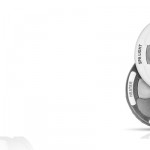Australian Architecture Association volunteer tour guide and achitecture student, Robert Morley recently visited Frank Lloyd Wright’s masterpiece, Fallingwater. Robert kindly agreed to share his story with readers of Complete Home’s Blog.
Words and photos by Robert Morley.
No self-respecting admirer/lover of architecture should live their life without making a pilgrimage to Fallingwater, one of Frank Lloyd Wright’s most wonderful architectural achievements. I had been telling myself that for most of my adult life, yet until mid-June this year I still had not made the trip. The excuse was always due to its location – it is somewhat off the beaten track, lost in heavy woodland at Bear Run, Pennsylvania, some 90 minutes by car from Pittsburg. There are little, if any, other places of interest for travelers requiring less than several hours in a car, so a visit is quite an undertaking.
Arriving at the gate to Fallingwater I had a mixture of great excitement and some apprehension. This house is so lauded, so photographed, so analysed, so widely known… would it live up to the massive expectations I had in my mind? In a nutshell, yes, and then some. It is, simply, wonderful. A splendid vision lost in the woodland, modernist, beautifully proportioned, poetic and it put a massive grin on my face.
The house was designed by Frank Lloyd Wright, and completed in 1935 for the Kaufman family, proprietors of a successful Pittsburg department store, as their family weekend retreat. It is situated deep in a valley and over the waterfall of Bear Run, a cascading creek which provides a wonderful rushing sound. Wright positioned the house over the waterfall and incorporated a natural rocky platform within the living room – the Kaufman’s liked picnicking at that rock and sitting atop the falls, so to Wright it was the only place to situate the house. Wright designed the house and all its contents, with the exception of Mrs Kaufman’s own rustic Austrian dining chairs.
In the 1960’s Edgar Kaufman, Jnr bequeathed the house to the Western Pennsylvania Conservancy Association and it has been open to the public ever since. The Association offers regular tours of the house, which are often sold out.
My tour commenced to the immediate south-east of the house, on a bridge affording a view of its various levels, the expansive terraces, steps descending to a landing suspended above the plunge pool and of course the creek. On entering the house I was struck by the series of transitions Wright had conceived. He was a master at creating spacial quality by leading you through a series of spaces…small spaces, larger spaces, smaller spaces, then outside. Small corridors, small rooms and a series of turns give way to living spaces which appear larger than they really are, because they are larger than the preceding spaces.
Visitors on my tour were astonished at the small bedrooms and low ceiling heights, in what from the outside, appears as a massive house. Wright is said to have been dismissive of tall people – ceiling heights in some sections of the house are a mere 2m high. Even lower bulkheads create further transition between the inside and the outside, and to other rooms. The overall effect is that whilst you know the house is generous in its entirety, you have the sense of a series of intimate and cosy spaces.
Another aspect of the house which really struck me was the way the outside had been brought into the house. You felt you were semi-outside when inside. Stone walls continue in from the outside, remaining un-rendered on the inside. Window panes are set directly into the mortar between the stones, without framing to that edge. The effect is that you do not notice the window pane, the inside space merges with the outside. This was a requirement in the brief for the house, for the Kaufman’s to be able to be as close as possible to nature even when inside.
I could easily write at length about Fallingwater. My visit is unforgettable. I urge you to take the journey to the house and experience the masterpiece for yourself.
For more information about Fallingwater visit:www.fallingwater.org










